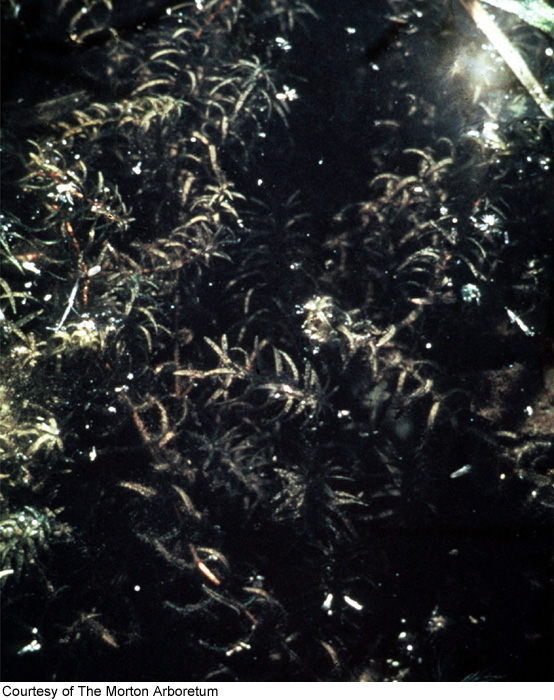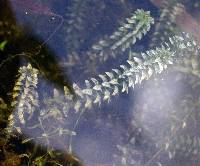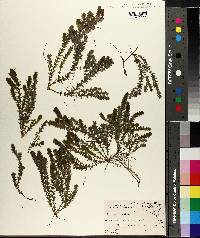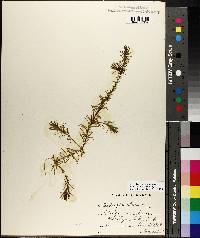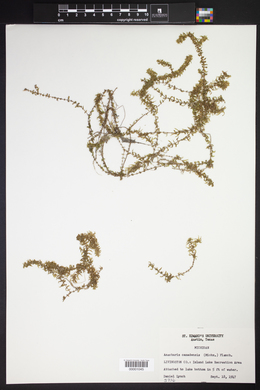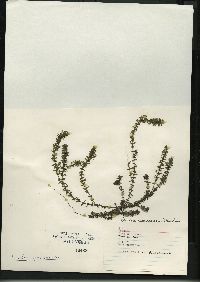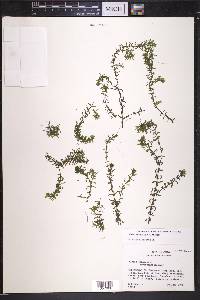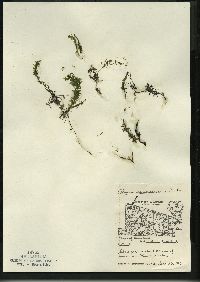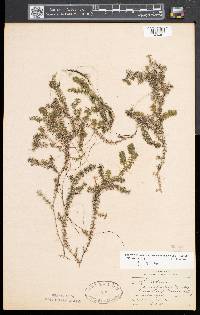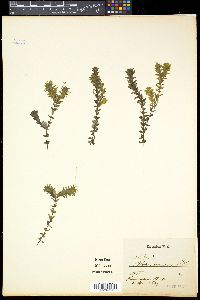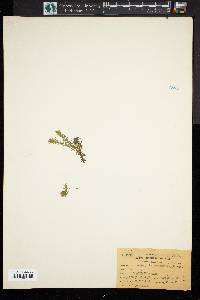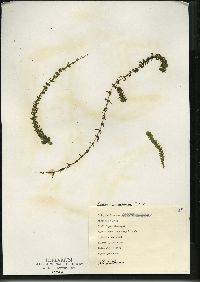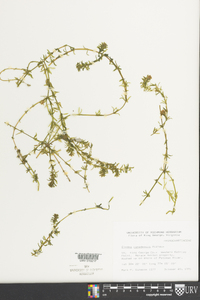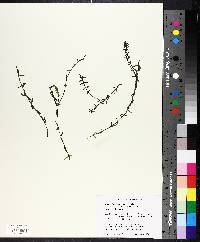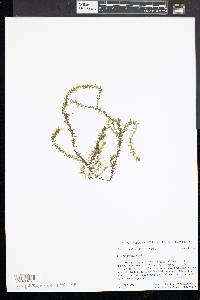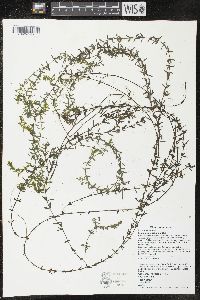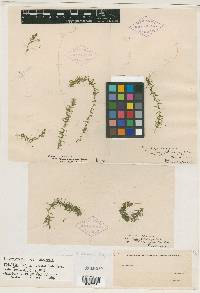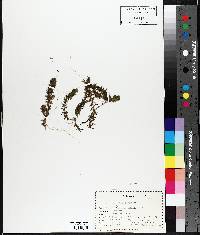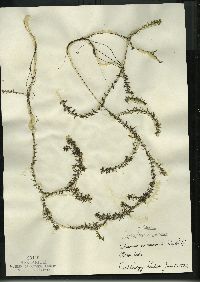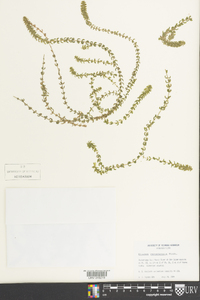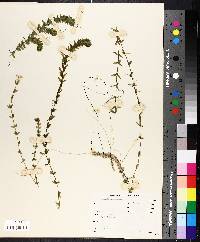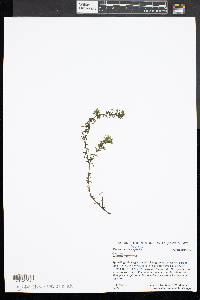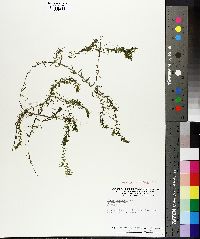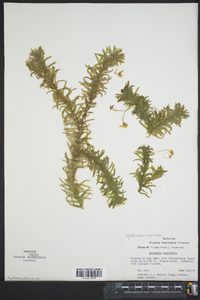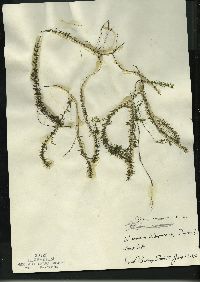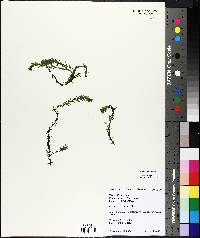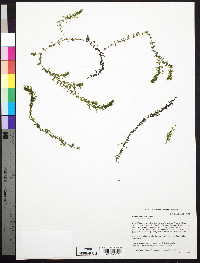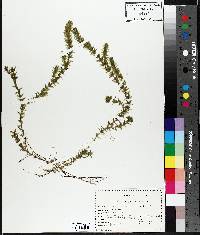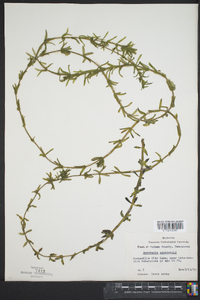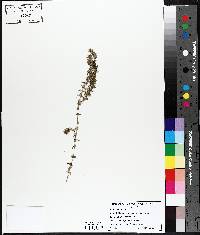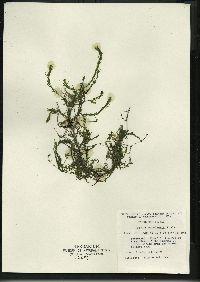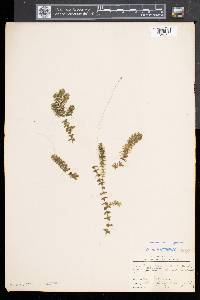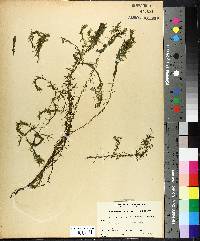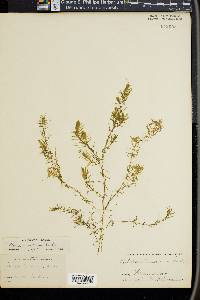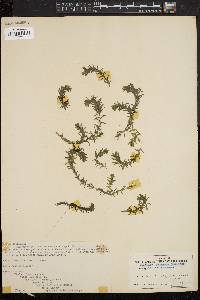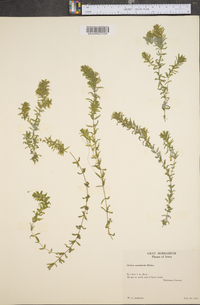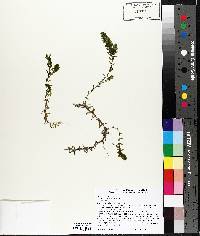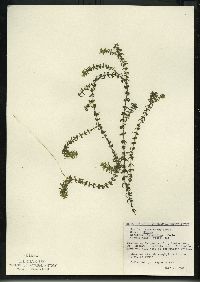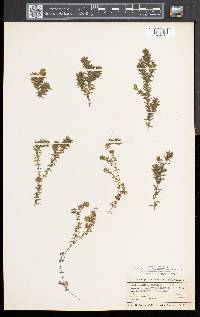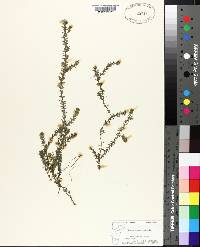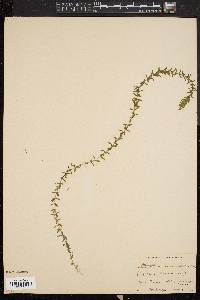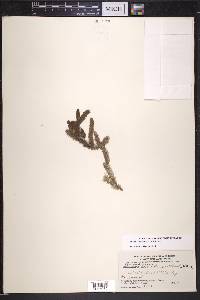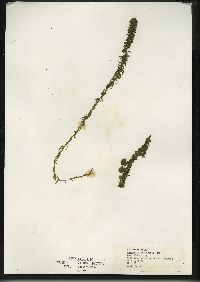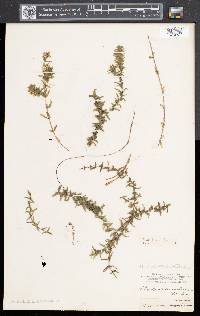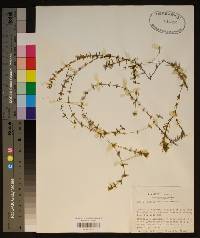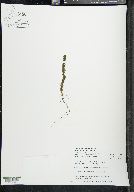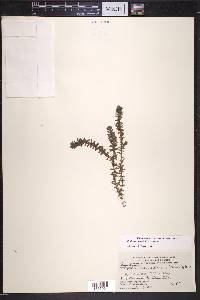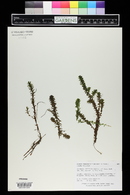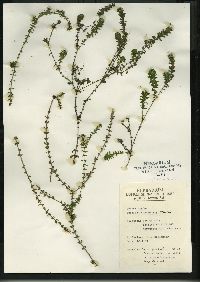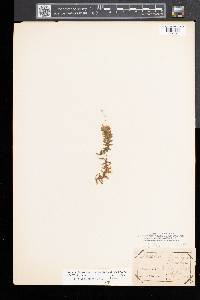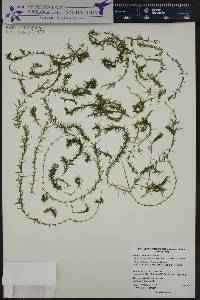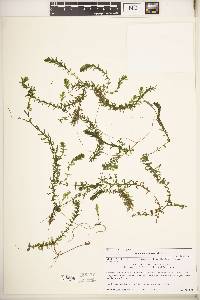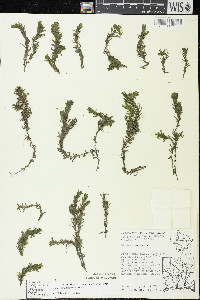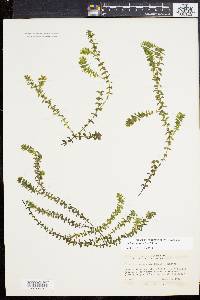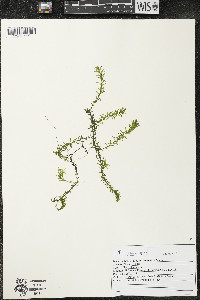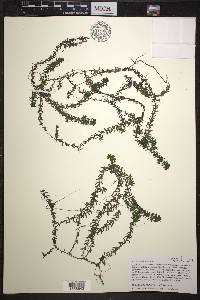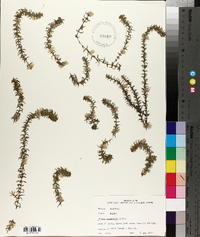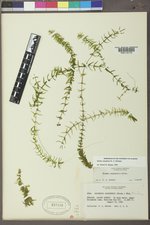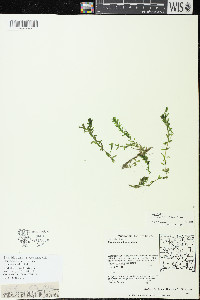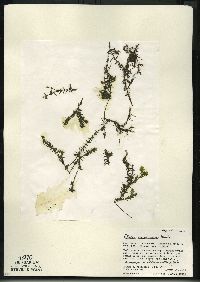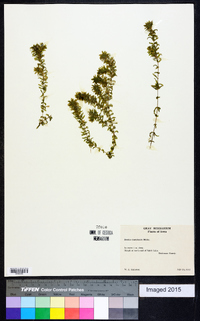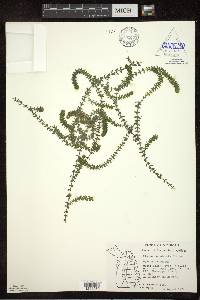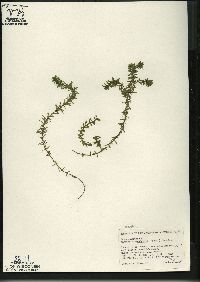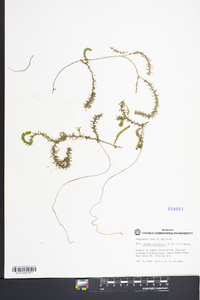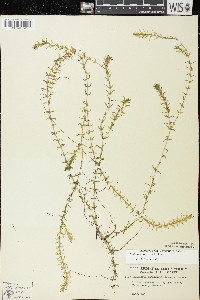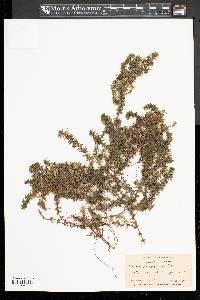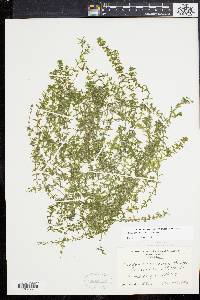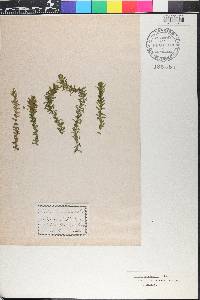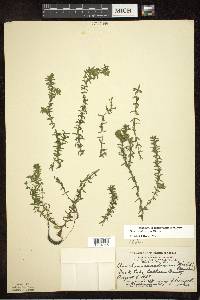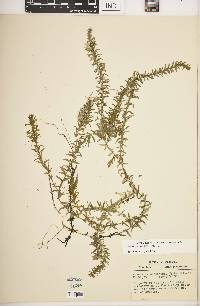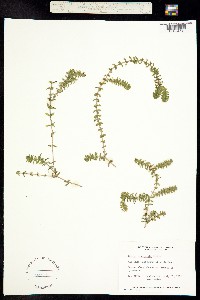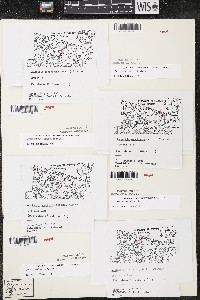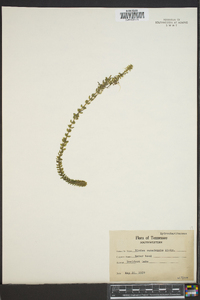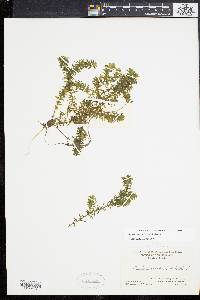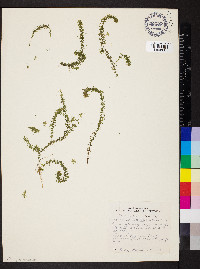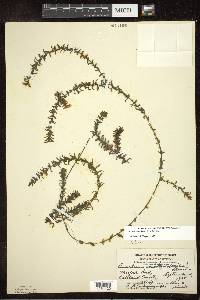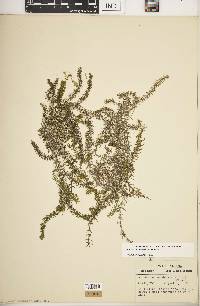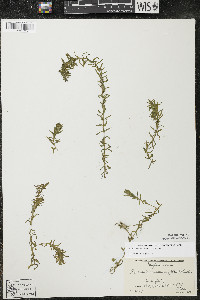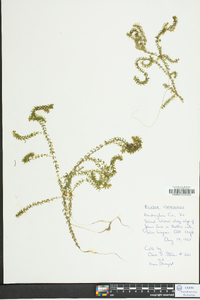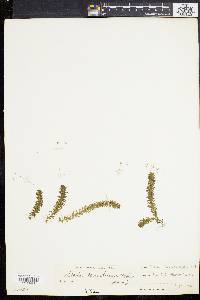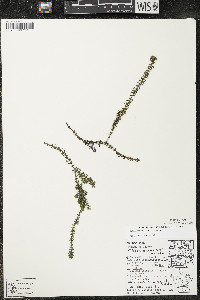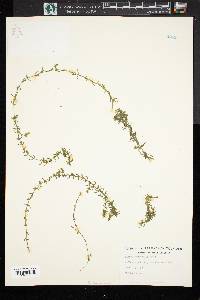Elodea canadensis
|
|
|
|
Family: Hydrocharitaceae
Canadian Waterweed, more...broad waterweed, Canada waterweed
[Anacharis canadensis (Michx.) Planch., moreAnacharis canadensis var. planchonii (Caspary) Victorin, Elodea brandegeeae St. John, Elodea ioensis Wylie, Elodea latifolia Casp., Elodea linearis (Rydb.) St. John, Elodea planchonii Caspary, Philotria canadensis (Michx.) Britt., Philotria linearis Rydb.] |
Leaves mostly in 3s, spreading to recurved, linear, oblong, to ovate, 5--13 ´ (1.1--)2--5 mm, flat. Inflorescences: staminate spathes cylindric, 8.2--13.5 mm; peduncles abscissing just before or during anthesis; pistillate spathes cylindric, 8.3--17.5 mm. Flowers unisexual; staminate flowers: stamens 7--9(--18), pedicels detaching before or during anthesis; all filaments connate proximally, forming column; anthers 1.7--3 mm; pollen in tetrads; pistillate flowers: styles 2.6--4 mm. Seeds fusiform, 4--5.7 mm, basal hairs absent. 2n = 24 (Britain). Flowering summer. Waters, mostly calcareous, of lakes and rivers; 0--2000 m; B.C., Man., N.B., N.S., Ont., Que., Sask.; Ala., Ark., Calif., Colo., Conn., Del., Fla., Idaho, Ill., Ind., Iowa., Kans., Ky., Maine, Md., Mass., Mich., Minn., Mo., Mont., Nebr., Nev., N.H., N.J., N.Mex., N.Y., N.C., N.Dak., Ohio, Oreg., Pa., R.I., S.Dak., Tenn., Utah, Vt., Va., Wash., W.Va., Wis., Wyo.; Europe; Asia; Australia. Perennial aquatic herb to 0.7 m long Stem: submersed, erect, rooted in substrate. Leaves: small and opposite near base, others in whorls of three, stalkless, bright green, 5 - 17 mm long, 1 - 5 mm (usually 2 mm) wide, linear to lance-oblong with a blunt tip, spreading to recurved, firm, with upper leaves densely overlapping. Flowers: either male or female, found on different plants (dioecious), with three sepals and three white and clawed petals (2 - 4.5 mm). Male flowers are surrounded by a stalked cylindrical leaflike sheath (spathe) 7 - 13.5 mm long and have 3 - 4 mm long sepals and seven to nine stamens fused at the base. When blooming, it is brought to the water surface on a stalk-like floral tube (2 - 30 cm long) formed by the joining of flower parts (hypanthium). Female flowers borne on a cylindrical spathe 8 - 20 mm long, with 2 - 3.5 mm long sepals, three styles, and a single-chambered ovary. Fruit: a leathery, egg-shaped, few-seeded capsule, opening irregularly. Seeds are 4 - 6.5 mm long and top-shaped with a 5 - 6 mm beak. Similar species: Egeria densa has leaves in whorls of four to eight, and flowers with larger petals than Elodea canadensis. Elodea nuttallii differs by having male spathes 4 mm or shorter, male flowers separating from the plant at when blooming, female flowers with styles usually 2 mm or shorter, and limp leaves narrower than 1.7 mm with upper leaves not closely overlapping. Flowering: mid June to mid August Habitat and ecology: Frequent in quiet lakes, streams and ditches, and fairly tolerant to somewhat degraded water. Occurence in the Chicago region: native Etymology: Elodea comes from the Greek word elodes, meaning marsh. Canadensis means "from Canada." Author: The Morton Arboretum Lower lvs small, opposite, ovate or lance-ovate, the others ternate, 6-17 נ1-5 (avg 2) mm, linear to lance-oblong, bright green, ±firm, the upper closely imbricate; fls elevated on a very slender, pedicel-like hypanthium 2-30 cm; staminate spathes 7-10+ mm (including the slender base), expanded and 2-lobed above; pistillate spathes 8-20 mm, cylindric; sep of staminate fls 3-4 mm, of pistillate fls 2-3.5 mm; pet white, clawed, 2-4.5 mm; fr turbinate, 5-6.5 mm with a 5-6 mm beak; 2n=48. In quiet water, Que. to B.C., s. to N.C., Ala., Ark., and Calif. July-Sept. (Anacharis c.; Philotria c.) Gleason, Henry A. & Cronquist, Arthur J. 1991. Manual of vascular plants of northeastern United States and adjacent Canada. lxxv + 910 pp. ©The New York Botanical Garden. All rights reserved. Used by permission. From Flora of Indiana (1940) by Charles C. Deam Frequent to common in most of our lakes, ponds, slow, flowing streams, and ditches of the lake area, becoming rare southward because its habitat is not found. It prefers clear and calcareous waters. Wiegand, in his study of the species, concludes that Anacharis canadensis is dioecious and that Anacharis Planchonii is the pistillate form of the species. ...... Indiana Coefficient of Conservatism: C = 3 Wetland Indicator Status: OBL |

